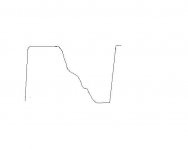Quick-Update: Mounted them back to back on a small heatsink, now I have a variation of 10mV around 0V DC. I guess that's good enough.
I have still quiet a variation between the power mosfets, but I understood from a comment Nelson made earlier in the forum that this should not be so important for the sound, only for the dissipation. So I gues I leave it the way it is and move on to the AC-Tests...
I have still quiet a variation between the power mosfets, but I understood from a comment Nelson made earlier in the forum that this should not be so important for the sound, only for the dissipation. So I gues I leave it the way it is and move on to the AC-Tests...
PSU
Noticed you had a query on snubbers for your LC... PSU.
Have you used the different PSU's with your Aleph X CRC.. vs LCLC.. and if so what are the differences?
Am currently trying to decide on PSU to build 15V rail 8A bias 8 x O44 ( XA42).
TIA
Simon
Noticed you had a query on snubbers for your LC... PSU.
Have you used the different PSU's with your Aleph X CRC.. vs LCLC.. and if so what are the differences?
Am currently trying to decide on PSU to build 15V rail 8A bias 8 x O44 ( XA42).
TIA
Simon
You must have a very low impedance speaker whenyou use this combination 15V/8A.
I have not experimented with PSUs, I want to build the ultimative Aleph-X (according to my subjective standards) and I made extremly good expereinces with choke-input-PSUs in the past, so why experiemnt with cheaper solutions ? As reported, I have only 30Mv ripple in the rail after a simple LC-filter and I could bring it further own if required, but I have right now only 0,2mV rillpe at the speaker-output, so why go further ?
I have not experimented with PSUs, I want to build the ultimative Aleph-X (according to my subjective standards) and I made extremly good expereinces with choke-input-PSUs in the past, so why experiemnt with cheaper solutions ? As reported, I have only 30Mv ripple in the rail after a simple LC-filter and I could bring it further own if required, but I have right now only 0,2mV rillpe at the speaker-output, so why go further ?
Short update: I am measuring an Ac current gain of 49 % with R12 = 1K, so I am wondering if the 1 % less than the optiomal 50% makes any difference and worth the hassle.
I made some measurements of the aquare wave response.
I have the + connected to the signal generator and the - connected to ground. No caps in the input. 10pf and 220k as feedback resistor. scope measures in diffenrential mode (adding both channels with one inverted) across the 6 ohm resistor at the output.
It looks pretty ugly though at the moment (see picture). Any ideas how to improve that ?
I made some measurements of the aquare wave response.
I have the + connected to the signal generator and the - connected to ground. No caps in the input. 10pf and 220k as feedback resistor. scope measures in diffenrential mode (adding both channels with one inverted) across the 6 ohm resistor at the output.
It looks pretty ugly though at the moment (see picture). Any ideas how to improve that ?
Attachments
OK, re-checked the whole equipment and found a problem of one output of the function generator - it gave 59V p-p into the Aleph-X...interesting that the Aleph-X was able to cope with that without going to hell...
...used now a different output with 3V p-p and now it looks not bad. Until which Voltage / Frequence did you get a perfect square-wave ?
...used now a different output with 3V p-p and now it looks not bad. Until which Voltage / Frequence did you get a perfect square-wave ?
- Status
- Not open for further replies.
- Home
- Amplifiers
- Pass Labs
- Help needed: Firing up the Aleph-X100
